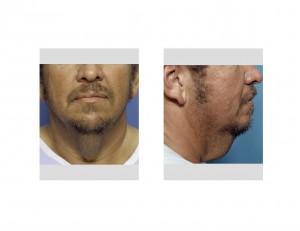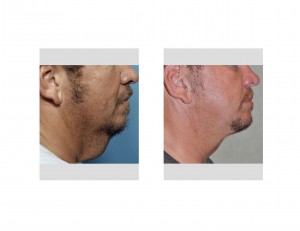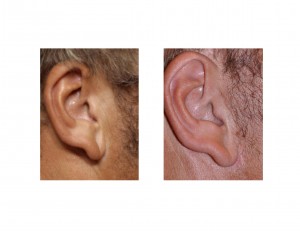Background: Facelifting in men is less commonly done than in women. This is for a variety of reasons including better quality of bearded facial skin that is more resistant to sagging, more tolerance for the profile of an aging neck, and concerns about having the procedure. Many men wait until their sagging necks and jowls are more severe and thus have older average ages when undergoing the male facelift.
The one non-aging male neck concern that changes these considerations is in the extreme weight loss patient. Weight loss of 75 lbs or greater, whether through bariatric surgery or diet and lifestyle changes, creates a sagging neck that will develop in a much younger man. While a lot of loose body skin can be hidden by clothes, this is not the case in the neck.


After surgery, his one complication was a submental fluid build-up which required multiple aspirations for resolution.

Case Highlights:
1) The most common reason that a younger man would undergo a facelift is when he undergoes a large amount of weight loss. While male neck skin snaps back better (has more elasticity) than that of a female, they can still have a significant neck wattle.
2) An extended facelift is the only possible treatment for the male weight loss neck problem.
3) The results of the male weight loss facelift will be considerable improvement but not a perfectly sculpted neck. Some rebound skin relaxation can be expected.
Dr. Barry Eppley
Indianapolis, Indiana


